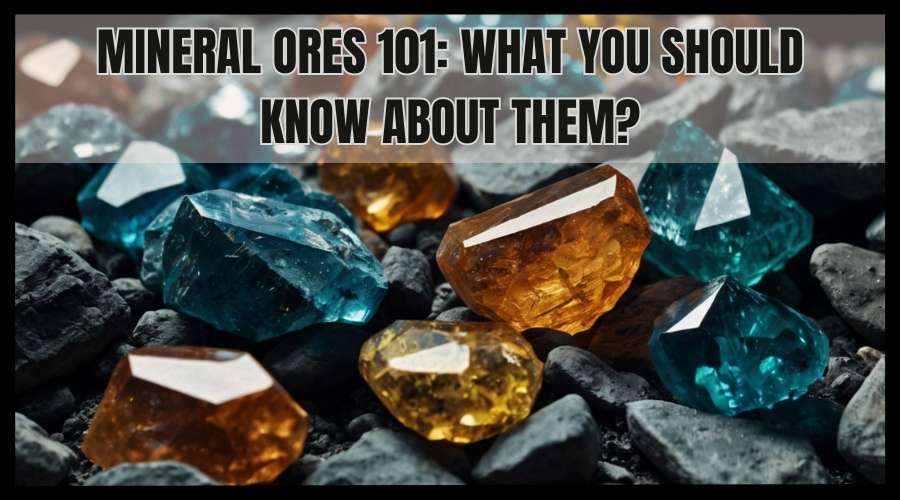
Mineral ores are fundamental to modern society, playing a crucial role in various industries, from construction to electronics. Understanding these resources is essential for anyone interested in geology, mining, or environmental science. This article delves deep into the world of mineral ores, offering an extensive overview of their types, extraction processes, and applications.
Mineral ores are naturally occurring rocks that contain metal or metal compounds in sufficient amounts to make it economically viable to extract the metal. These ores are rich sources of valuable elements such as iron, copper, gold, and more. The extraction and processing of these materials are vital for producing everyday products and advanced technologies.
There are several types of mineral ores, each with unique characteristics and uses. Here are the most common types:
Metallic ores contain metal elements that can be extracted through various methods. Examples include:
· Iron Ore: Used primarily in the production of steel.
· Copper Ore: Essential for electrical wiring and electronics.
· Gold Ore: Valued for jewelry and financial investment.
Non-metallic ores contain minerals that do not have metallic properties. They are used in industries like construction, agriculture, and manufacturing. Examples include:
· Limestone: Used in cement production and building materials.
· Phosphate Rock: Essential for fertilizer production.
· Gypsum: Used in drywall and plaster products.
Mineral ores form through geological processes over millions of years. There are several key methods of formation:
These processes involve crystallizing minerals from molten rock (magma) beneath the Earth's surface. As magma cools, minerals crystallize and concentrate to form ore deposits.
Hydrothermal processes occur when hot, mineral-rich water flows through cracks and fissures in the Earth's crust. These fluids deposit minerals as they cool, forming ore veins.
Sedimentary processes involve the accumulation and compaction of mineral particles over time. For example, iron ores often form in sedimentary basins through the precipitation of iron from water.
The extraction of mineral ores involves several steps, from exploration to processing. Here's a breakdown of the main stages:
Exploration is the first step in mining, involving geological surveys and drilling to locate ore deposits. Modern techniques like remote sensing and geophysical surveys help identify potential mining sites.
Once a deposit is confirmed, mining operations begin. There are two primary mining methods:
· Surface Mining: Involves removing overburden (soil and rock covering the ore) to access the ore beneath.
· Underground Mining: Used when the deep underground ore deposits require shafts and tunnels to extract the ore.
After extraction, ores undergo processing to separate the valuable minerals from the waste rock. Standard processing methods include:
· Crushing and Grinding: Breaking down the ore into smaller pieces to facilitate further processing.
· Flotation: Using chemicals to separate minerals based on their chemical properties.
· Smelting: Heating the ore to high temperatures to extract the metal.
Mining has significant environmental impacts, which must be managed responsibly to minimize harm. Key concerns include:
Mining operations can lead to deforestation, soil erosion, and habitat destruction. Reclamation efforts aim to restore mined areas to their natural state.
Mining can contaminate water sources with heavy metals and chemicals used in processing. Effective water management and treatment are crucial to prevent pollution.
Dust and emissions from mining activities contribute to air pollution, affecting both human health and the environment. Implementing dust control measures and emission reduction technologies is essential.
Mineral ores are vital to the global economy, providing raw materials for various industries. The mining sector creates jobs, generates revenue, and drives technological advancements. Key economic benefits include:
Mining operations create direct and indirect employment opportunities, supporting local and national economies.
Taxes and royalties from mining contribute significantly to government revenues, infrastructure funding, and public services.
The demand for high-tech products drives innovation in mining and processing technologies, leading to more efficient and sustainable practices.
Sustainable mining aims to balance economic benefits with environmental protection and social responsibility. Key practices include:
Implementing environmental management plans to minimize air, water, and land impacts.
Involve local communities in decision-making processes and ensure fair distribution of benefits.
Maximizing resource recovery and minimizing waste through advanced technologies and recycling.
Advancements in mineral processing technologies are making mining more efficient and sustainable. Notable innovations include:
Automation reduces human error, increases safety, and improves efficiency in mining operations.
New separation methods, such as sensor-based sorting, enhance the recovery of valuable minerals from ores.
Developing environmentally friendly processing methods reduces the environmental footprint of mining activities.
The future of mining lies in adopting sustainable practices and leveraging technological advancements. Key trends include:
Integrating digital technologies, such as AI and IoT, transforms mining operations, making them more efficient and data-driven.
Using renewable energy sources, such as solar and wind, to power mining operations reduces carbon emissions and promotes sustainability.
Implementing circular economy principles, such as recycling and reusing materials, minimizes waste and conserves resources.
Mineral ores are indispensable to modern life, providing the raw materials for countless products and technologies. Understanding their formation, extraction, and processing is crucial for anyone interested in geology, mining, or environmental science. As the demand for minerals grows, adopting sustainable mining practices and innovative technologies will be essential to balance economic benefits with environmental protection and social responsibility.